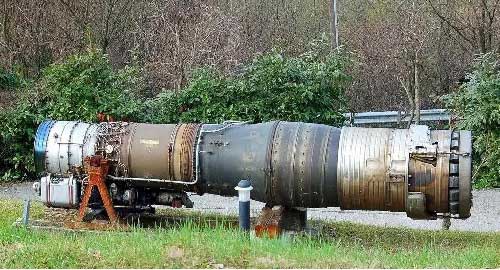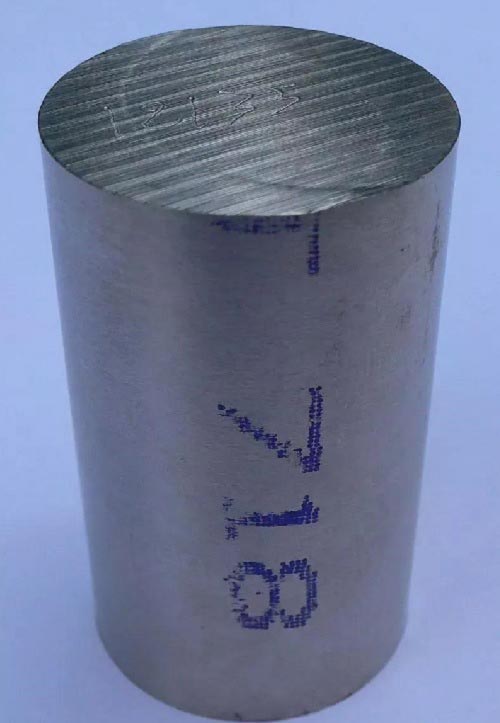60 years of research and exploration! Achievements of China’s niobium superalloy technology in the aerospace field.(HY-industry technical centre)
aviation
-
China ’s research on niobium dates back to the 1950s. In 1956, Chinese non-ferrous metal engineers produced a niobium sintered bar by carbothermal reduction. Four years later, in the 1960s, China mastered the technology of producing high-purity ferro-niobium by aluminothermic reduction.
In this era, Baotou Iron and Steel Plant and Tangshan Iron and Steel Plant began to prepare niobium steel. The germination and rise of the niobium smelting industry in Ningxia and Zhuzhou have provided a solid material foundation for China’s niobium industry. In 1962, China’s first niobium wire was shipped from the factory. In 1963, China’s first rolled niobium plate came out. Immediately afterwards, China launched the research and development of niobium superconducting alloy and niobium 75 alloy.
-
On March 30, 1961, China and the Soviet Union signed in Moscow “Concerning the granting of production license rights, technical information and the production of MiG with К-13 missiles to the Chinese MiG-21Ф aircraft with К-13 missiles. -21 Agreement on Technical Assistance to China from Type ФФ Aircraft.
 The agreement stipulates that the Soviet Union issued to China the production license of MiG-21F-13 fighter jets, R-11F-300 turbojet engines, and К-13 air-to-air missiles without attaching any conditions. In other words, since 1961, the Soviet Union has provided technology, drawings, and parts in preparation for manufacturing the MiG-21F-13 fighter jet in China.
The agreement stipulates that the Soviet Union issued to China the production license of MiG-21F-13 fighter jets, R-11F-300 turbojet engines, and К-13 air-to-air missiles without attaching any conditions. In other words, since 1961, the Soviet Union has provided technology, drawings, and parts in preparation for manufacturing the MiG-21F-13 fighter jet in China. -
Soon, a complete MiG-21F-13 and two R-11F turbojet engines from the Tumansky Design Bureau came to China. Come together, there are also spare parts available for assembly into 15 MiG-21F fighters. The R-11 turbojet engine of the Tumansky Design Bureau was the first axial-flow dual-rotor turbojet engine in the Soviet Union. It had a compressor design that surprised engineers around the world at that time. With the deployment of Su-15 fighters and the great success of MiG-21 / J-7 series fighters, the output of this type of engine reached an astonishing and admirable 20,900 units!
-
The imitation of the R-11 turbojet engine of the Tumansky Design Bureau officially opened China’s development path in the field of niobium-containing nickel-based superalloys. According to the design of Tumansky Design Bureau, the R-11 turbojet engine has a double rotor structure, with a 6-stage compressor and a 2-stage turbine. The rotor shaft of the low-pressure compressor passes through the inside of the high-pressure rotor shaft. The combustion chamber flame tube of the R-11 turbojet engine of the Tumansky Design Bureau is cooled by a gas film, and a special high-temperature ceramic is provided on the inner and outer walls. The pre-turbine temperature of the R-11 turbojet engine of the Tumansky Design Bureau reached 955 ° C. This was a huge challenge to China’s processing technology and materials at that time.
-
In the process of imitation in China, the niobium industry has just started. In 1965, there were relatively few studies on niobium alloys, not to mention mass production. Therefore, the high-temperature alloy blank materials of the early R-11 turbojet engine imitation in China were all imported from the Soviet Union. Engineers soon discovered that the forged grains of the Soviet blank material were too large and the material was prone to cracking. Under the condition of the level of machining in China at that time, the scrap rate of producing turbojet engine turbine blades was as high as 52%. Therefore, in 1965, China launched a large number of scientific research departments, using industrial departments and universities to cooperate with each other, and simply developed China’s high-temperature alloy GH46, which solved the problem of turbine blades in one fell swoop. In addition, Chinese engineers have figured out a set of processing technology more suitable for high-temperature materials, and got rid of the dependence on complicated cutting technology.
-
In the process of imitating the R-11 turbojet engine of Tumansky Design Bureau, China developed 26 kinds of high-temperature alloys and high-temperature coating materials and created 46 new processing techniques. In the absence of follow-up support from the Soviet Union, Chinese engineers developed the engine test bed in 7 months.
During the test run, Chinese engineers discovered the flutter of the compressor blades of the R-11 engine of the Tumansky Design Bureau. Through extensive calculation and testing, it was decided to reduce the number of blades of the first-stage compressor from 31 to 24. In the later test drive, the engineer discovered the phenomenon of easy parking. After analysis, it is the phenomenon that a bearing has a shaft holding under high temperature.
-
In cooperation with the Qiqihar Steelmaking Plant and other scientific research institutes, a high-temperature alloy GH33A specially used for aircraft engine bearings was born. As a result, China’s high-temperature alloys began to gradually form a system. Chinese deformed superalloys are represented by GH (abbreviation of Gao wen He jin for Chinese superalloy) followed by Arabic numerals. The first digit is 1, indicating that it is an iron-based solid solution strengthening superalloy; the first digit is 2, indicating that it is an iron-based age strengthening superalloy; the first digit is 3, indicating that it is a nickel-based solid solution strengthening superalloy. The first digit is 4, which is expressed as a nickel-based aging strengthened superalloy.
Everyone knows the story after the MiG-21 fighter project that year.

spaceflight
-
 In 1978, Chinese engineers made a major breakthrough in the rocket engine nozzle throat lining material specially developed for a certain type of rocket engine. Its samples performed gratifyingly on the ground ignition test. Today, China’s domestic GH738 (Waspaloy Alloy), GH909, GH4169 (Inconel 718), GH690 (Inconel 690), GH145 (Inconel X-750), GH4199 and other high-temperature alloys can be used in many parts of aircraft engines and rocket engines.
In 1978, Chinese engineers made a major breakthrough in the rocket engine nozzle throat lining material specially developed for a certain type of rocket engine. Its samples performed gratifyingly on the ground ignition test. Today, China’s domestic GH738 (Waspaloy Alloy), GH909, GH4169 (Inconel 718), GH690 (Inconel 690), GH145 (Inconel X-750), GH4199 and other high-temperature alloys can be used in many parts of aircraft engines and rocket engines. -
Forged GH4169 alloy is used to make engine discs, rings, shafts, fasteners and plates, and even the entire casing. China’s GH4169 niobium-containing nickel-based superalloy has the same performance as the American Inconel 718 super alloy and the French NC19FeNb super alloy.
-
Around the Chinese New Year in 1988, Shanghai HY Industry Co., Ltd was established in China and began to work with Chongqing Materials Research Institute (CMRI), Beijing Beiye Functional Materials Corporation (original name is Beijing Metallurgical Research Institute), Shanghai Institute of materials (SRIM ), The R & D team of The Institute of Metal Research (IMR), Chinese Academy of Sciences (CAS) has strong design capabilities, and has provided huge support for China ’s niobium-containing nickel-based superalloy industry.
-
Now China’s commercial aerospace industry is gradually maturing, and finally has a complete industrial foundation and world-leading research and development strength!

